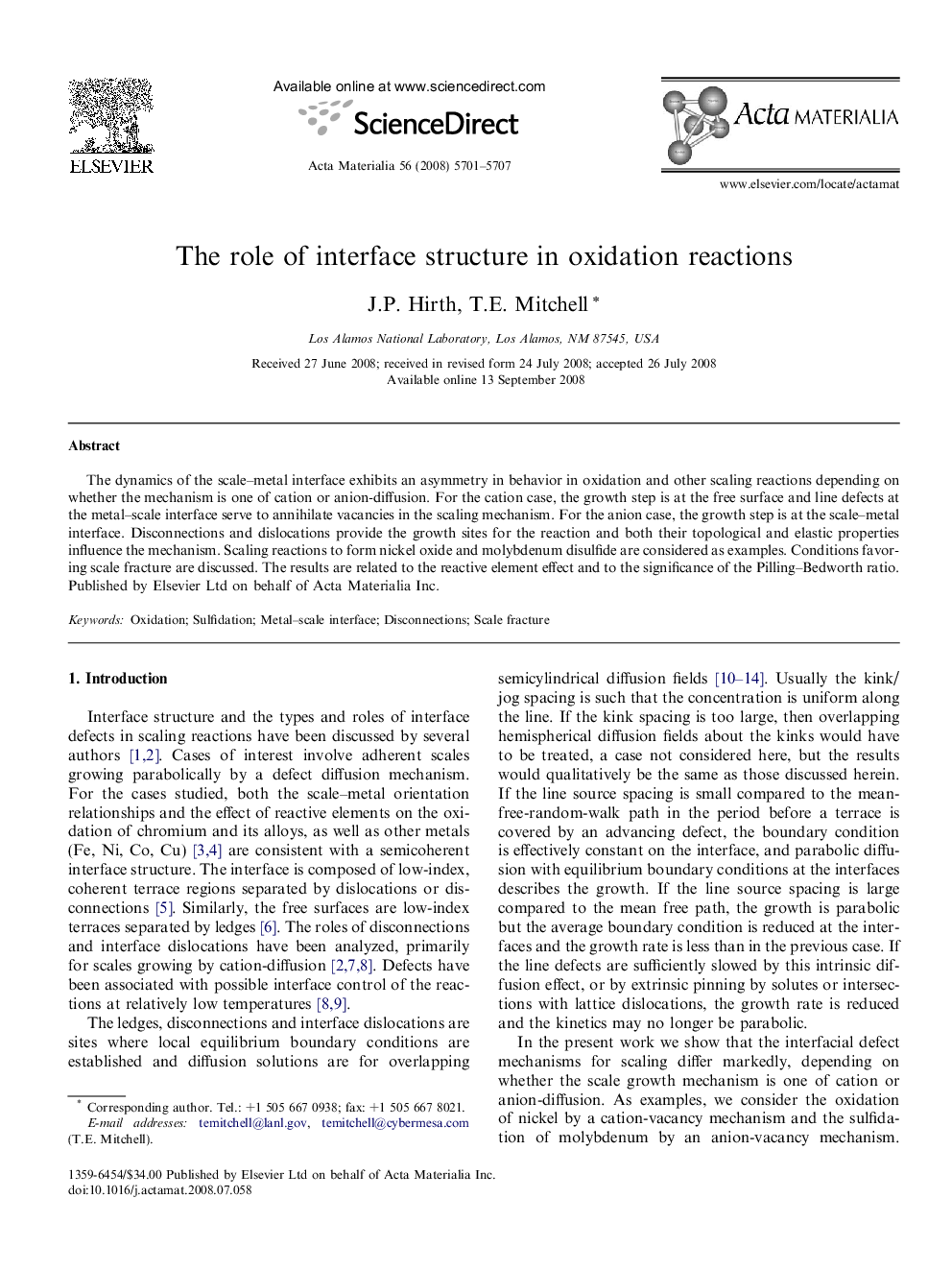| Article ID | Journal | Published Year | Pages | File Type |
|---|---|---|---|---|
| 1449826 | Acta Materialia | 2008 | 7 Pages |
The dynamics of the scale–metal interface exhibits an asymmetry in behavior in oxidation and other scaling reactions depending on whether the mechanism is one of cation or anion-diffusion. For the cation case, the growth step is at the free surface and line defects at the metal–scale interface serve to annihilate vacancies in the scaling mechanism. For the anion case, the growth step is at the scale–metal interface. Disconnections and dislocations provide the growth sites for the reaction and both their topological and elastic properties influence the mechanism. Scaling reactions to form nickel oxide and molybdenum disulfide are considered as examples. Conditions favoring scale fracture are discussed. The results are related to the reactive element effect and to the significance of the Pilling–Bedworth ratio.
